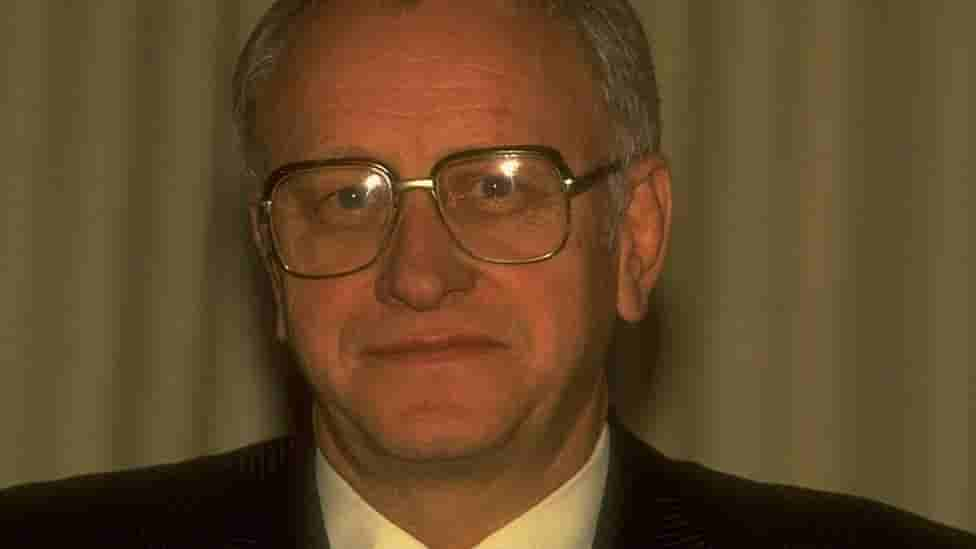Adriaan Vlok, a controversial police minister under the white minority’s rule in South Africa, passed away at age 85.
With police organising hit squads that abducted, tortured, and killed protestors, he was instrumental in imposing the racist apartheid system.
Following the fall of apartheid in 1994, Vlok made some confessions and was given a pardon.
How did Adriaan Vlok die?
In the early hours of January 8, 2023, During the apartheid era, Adriaan Vlok served as minister of law and order.
According to Peet Bothma, a spokesman for the family, Vlok, 85, was admitted to the Unitas Hospital in Centurion.
The funeral’s specifics would soon be publicised, according to Bothma.
Adriaan Vlok cause of death
The community is inconsolable at Adriaan Vlok’s cause of death.
Adriaan Vlok passed suddenly following a brief illness, according to a statement from Peet Bothma, the family’s spokeswoman.
Who was Adriaan Vlok?
Former politician Adriaan Johannes Vlok was from South Africa. He served as South Africa’s Minister of Law and Order from 1986 to 1991, during the final years of apartheid.
In response to the country’s escalating political unrest and opposition, the South African government during this time planned and implemented harsh repressive measures, including the use of hit squads to carry out bombings and assassinate anti-apartheid activists. Vlok was a member of the State Security Council.

Adriaan Vlok Career
Vlok began his work as a magistrate for the Department of Justice in Keimoes and Upington. In 1959 he became a member of the National Party.
From 1959 until 1966, Vlok worked as the undersecretary of the Department of Justice in Pretoria while earning a diploma as an attorney at the University of Pretoria. He was then named B. J. Vorster’s private secretary, who serves as the South African prime minister’s aide.
His departure from the Department of Justice in 1970 was motivated by his desire to work for a court messaging service before entering politics. He was chosen in 1972 to serve on the Verwoerdburg (now Centurion) City Council and in 1974 to represent the district in the national Parliament.
In September 1984, he received the title of deputy minister of defence. A few months later, in January 1985, he received the title of deputy minister of law and order. In his role as deputy minister of law and order, he was in charge of the arrest and suppression of about 30,000 people.
As the minister of Law and Order in 1988, he was responsible for restricting 17 anti-apartheid organisations. In 1990, when talks to end apartheid started, Vlok’s position as minister caused particular concern because the African National Congress requested that he be fired.
TRC amnesty and Apologies
The Churches of South Africa Council and the COSATU labour union offices at Khotso House were bombed, and only Vlok, a cabinet minister, acknowledged guilt.
In 1999, Vlok was given amnesty by the Truth and Reconciliation Commission (TRC). In the middle of 2006, Vlok apologised publicly for several actions he had taken but hadn’t disclosed to the TRC and for which he might have been prosecuted. Washing Frank Chikane’s feet was a significant gesture on his part. Chikane, the secretary-general of the South African Council of Churches, had been the target of a murderous assassination attempt by Vlok.
The “Mamelodi 10,” a group of anti-apartheid campaigners lured by a police informant to their deaths, were then given foot baths. Ten moms and widows collectively made up the “Mamelodi 10”. His conversion to Christianity, which he said occurred before making a public apology for his actions as Minister of Law and Order, is credited with causing him to have second thoughts about his involvement in apartheid and his need to beg for forgiveness.
The High Court in Pretoria sentenced him to ten years in prison with a suspension on August 17, 2007, for his part in the murder plot against Frank Chikane in 1989.
He issued a public call in 2014 for more people who broke the law during the apartheid era to come forward and take responsibility.
He developed and has been the executive director of “the Feed a Child project,” a nonprofit organisation that feeds kids, since 2015.
Read Also: How did Sinikiwe Mpofu die? Lady Chevrons pioneer’s cause of death Explained
